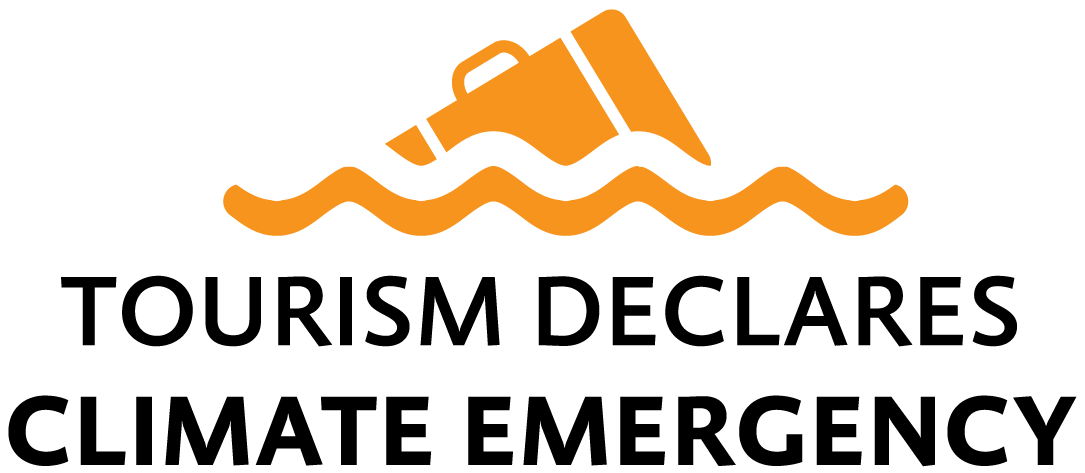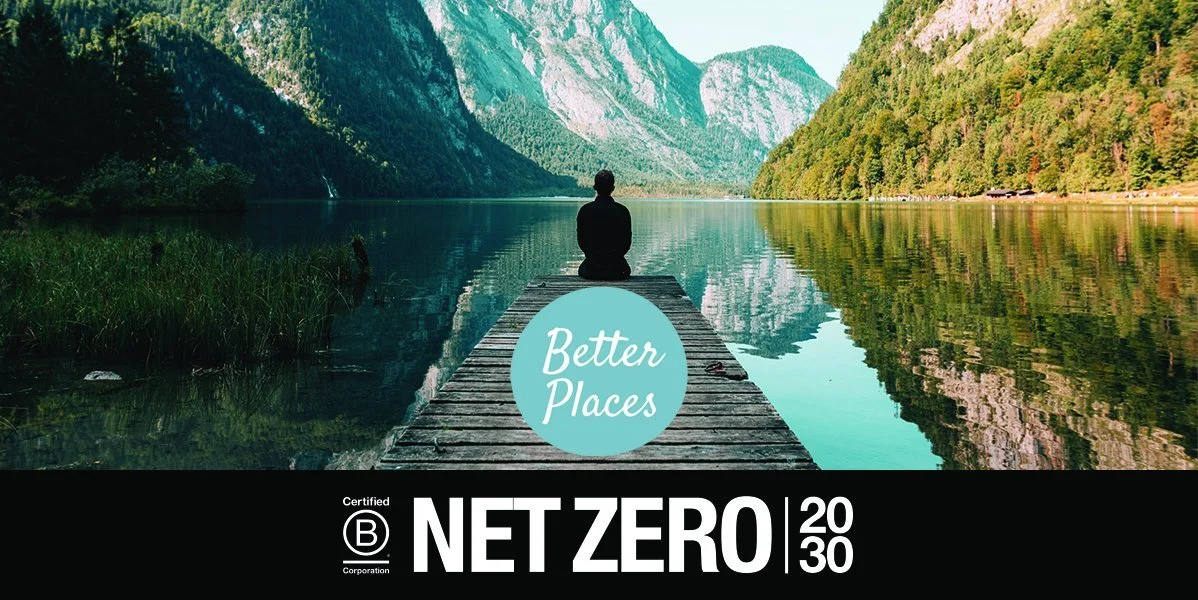Ways for tour operators to reduce carbon with Better Places
Better Places is a B Corporation certified founding member of Tourism Declares, and has been measuring its carbon emissions since the start in 2014.
Operating in the Netherlands, Better Places prides itself on connecting travellers with local experts and creating itineraries with a positive impact.
We caught up with co-founder Saskia to find out why and how Better Places has always kept a careful eye on its carbon footprint.
What motivated you to join Tourism Declares?
We’ve been worried about the negative impact of travel’s carbon emissions for many years. In the past, we worked predominantly with far-flung destinations, and so understanding the carbon impact of flying was a priority. To better understand how we can measure and reduce our carbon footprint, we worked with Paul Peeters from Breda University of Applied Sciences (BUas) to calculate the CO2 emissions of our trips.
Based on the initial work, CARMACAL was developed, an award-winning carbon management tool for tour operators, to map the carbon emissions of our trips. This tool provided a lot of clarity, particularly around the importance of flying direct rather than with multiple stops. The emissions from in-destination travel booked through Better Places amount to approximately 25% of the total journey, whereas emissions from international flights are responsible for about 75%.
Using CARMACAL, we were able to calculate the average emission of a Better Places journey, including international flights, at 2.7 tons per person. This is a significant amount considering the average western person produces between 7 and 15 tons of CO2 per person in an entire year. Since then, we’ve worked hard to persuade our clients to fly less and fly direct, and we like to be transparent about the different carbon emissions of each flight.
Although some search engines do provide carbon data for some flights, getting this info is still patchy and unreliable. It would be great if every time you searched for or booked a flight the carbon emissions and how to reduce them popped up.
Lobbying and working with others to bring about this kind of change is what motivated us to join Tourism Declares. As a small company, we can only have a significant impact if we join up with others.
What action have you taken since declaring?
We have put all our sample itineraries under a magnifying glass, which resulted in developing our maximum positive impact trips.
These are 3-week long itineraries which include stays in small-scale accommodation owned and operated by locals, excursions with residents, visiting nature parks and conservation areas, and overland travel in a destination.
We expanded our offer of adventure trips within Europe, and we provide details of how to get there by train (this information took a long time to compile!). We currently offer ten different destinations within Europe and are still adding more.
For long-haul trips, we offer a minimum of 17-days to encourage people to travel less but for longer. We’ve also replaced domestic flights with train trips where possible and reduced the overall number of domestic flights. We’ve changed most of our itineraries to include five rather than eight stops within a destination, so trips are slower and have a lower-impact. We know that 90% of a long haul trip’s CO2 emissions are from flights, and so this has always been our focus. Before COVID-19 hit, we were due to work with Sky Energy to invest in renewable jet fuel, but since bookings stopped, we’ve had to put that on hold.
We have chosen to fully compensate for all emissions caused by travel booked through Better Places. We offset not only the in-destination travel but also the emissions from the flights at no additional cost the traveller. These days, most companies pay around €5 per traveller to offset the CO2 emissions of the entire trip (including the flight). According to Stanford University, the actual climate damage is closer to €200 per ton of CO2. The price of voluntary offsetting is far too low.
Flying less and at a greater cost now means that we can travel in more sustainable aircrafts in the future. With all that in mind, we choose to impose a voluntary CO2 tax on ourselves. We started in 2018 with €5 per traveller, €7,50 in 2019 and in 2020 it is €10 per traveller. We invest the total amount in sustainable energy projects; helping to speed up the energy transition along the way.
What tools or resources have you found most useful when declaring, measuring or reporting on carbon emissions?
Rather than relying on averages, we now use Atmosfair to calculate the carbon emissions of flights and provide customers with the most sustainable options.
This is a detailed (it provides emissions with and without the RFI factor — additional emissions besides from carbon) and easy-to-use carbon calculator that I would highly recommend.
South Pole has been helpful in the offsetting process. It has 700 projects to choose from, each linked to the Paris Agreement and UN Sustainable Development Goals.
What are the main challenges you face when it comes to reducing emissions?
Innovation is so slow because the lobby of airlines is so strong. It’s unbelievable that there’s not more state support and incentive to invest in and progress green flying options. Here in the Netherlands, there’s still talk of new airports.
Sadly, for much of the travel industry, the only action I see is to reduce prices to get more people travelling. This doesn’t benefit anyone — no one can be making any money if it only costs 150 Euros to go to Turkey for a week.
The lack of transparency on how to calculate emissions makes it tricky for companies to get involved. It would be great if we all worked towards a more consistent methodology. For example, last year off-setting became the solution everyone turned to, but in reality, paying 5 Euros per trip to plant some trees is not going to make a difference.
Flying has become so cheap that other means of transport simply cannot compete. A tax on CO2 emissions could change that. It would make tickets more expensive, hopefully resulting in increased investments towards making the airline industry more sustainable. In short, we need to work together and ramp up innovation.
What solutions are you most proud of?
Five years ago, Better Places was the first tour operator to report on and compensate for all travel undertaken by our travellers and staff, at our own expense. We started to buy carbon credits in bulk from the South Pole Group, and invest these in a Gold Standard clean cooking stove project in Ghana.
Two years later, the Dutch Tour Operators Association (ANVR) followed our example and started to offer all members the opportunity to buy carbon credits in bulk through the South Pole Group. We are very proud that in 2019 our initiative was taken to the next level by the Adventure Travel Trade Association. I’m proud that we were one of the first companies to measure carbon emissions, and shared our learnings and process with others. It’s been great to prove what’s possible.
What does the next level of commitment look like?
We need to convince people that it’s not normal to take a faraway trip every year. When I was young, a long-haul trip was a once-in-a-lifetime event, not just another holiday. We all need to play a part in emphasising this message.
COVID-19 has helped this and attitudes are changing. People have slowed down and are paying more attention to the details around us. I hope that we’ll continue to appreciate what is closer to home.
Do you think it’s important that the travel industry works collaboratively on combating the climate crisis? Why?
We must work together to lobby and influence policies on a national, regional, and global level. I don’t think we will make a difference if we only focus on changing customer behaviour. There needs to be change at a higher level.
I hope that Tourism Declares can play a leading role in encouraging everyone to think big, and lobby for greener policies in aviation and elsewhere. If you listen to the scientists, we do have solutions out there; we need to change how we’re doing things. It’s a matter of resetting priorities. If we don’t act together and fast, there may not be a travel industry left.
How would you like the travel industry to work together better?
It would be great if we could address the lack of transparency around carbon and offsetting, and bring everyone on the same page. People need to be aware of exactly what is happening.
What advice would you give to others who are considering declaring?
The first step is to start measuring. If you don’t know where your carbon footprint is coming from, you can’t begin to reduce it. When we started measuring, I had no idea how much more of an impact taking multiple flights has, and since then, Atmosfair has helped to demonstrate the difference between various flights. Measuring carbon can take quite a bit of time, but it’s much easier if you’re a small company, and there are often interns from universities willing to help out.
To find out more about Better Places’ Climate Action Plan, click here.







Students get access to a range of online modules which they complete alongside the rest of their travel group prior to departure. Two focus on the climate crisis.